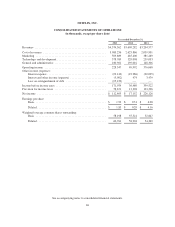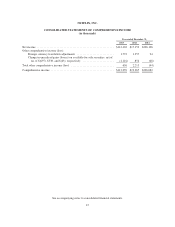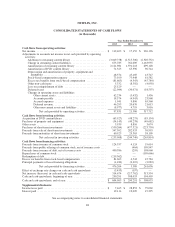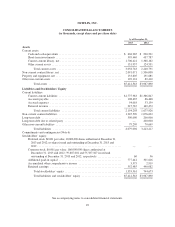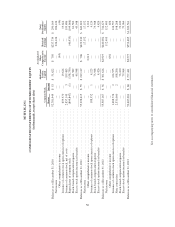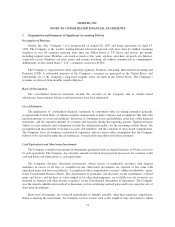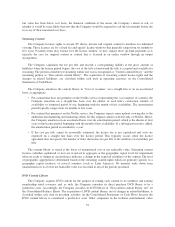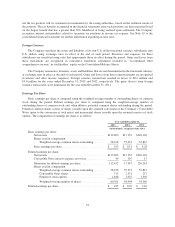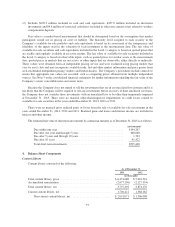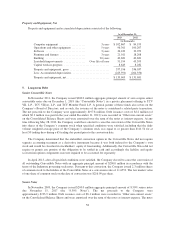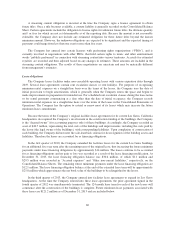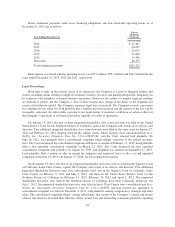NetFlix 2013 Annual Report Download - page 53
Download and view the complete annual report
Please find page 53 of the 2013 NetFlix annual report below. You can navigate through the pages in the report by either clicking on the pages listed below, or by using the keyword search tool below to find specific information within the annual report.NETFLIX, INC.
NOTES TO CONSOLIDATED FINANCIAL STATEMENTS
1. Organization and Summary of Significant Accounting Policies
Description of Business
Netflix, Inc. (the “Company”) was incorporated on August 29, 1997 and began operations on April 14,
1998. The Company is the world’s leading Internet television network with more than 44 million streaming
members in over 40 countries enjoying more than one billion hours of TV shows and movies per month,
including original series. Members can watch as much as they want, anytime, anywhere, on nearly any Internet-
connected screen. Members can play, pause and resume watching, all without commercials or commitments.
Additionally, in the United States (“U.S.”), members can receive DVDs.
The Company is organized into three operating segments, Domestic streaming, International streaming and
Domestic DVD. A substantial majority of the Company’s revenues are generated in the United States, and
substantially all of the Company’s long-lived tangible assets are held in the United States. The Company’s
revenues are derived from monthly membership fees.
Basis of Presentation
The consolidated financial statements include the accounts of the Company and its wholly-owned
subsidiaries. Intercompany balances and transactions have been eliminated.
Use of Estimates
The preparation of consolidated financial statements in conformity with accounting principles generally
accepted in the United States of America requires management to make estimates and assumptions that affect the
reported amounts of assets and liabilities, disclosure of contingent assets and liabilities at the date of the financial
statements, and the reported amounts of revenues and expenses during the reporting periods. Significant items
subject to such estimates and assumptions include the amortization policy for the streaming content library; the
recognition and measurement of income tax assets and liabilities; and the valuation of stock-based compensation.
The Company bases its estimates on historical experience and on various other assumptions that the Company
believes to be reasonable under the circumstances. Actual results may differ from these estimates.
Cash Equivalents and Short-term Investments
The Company considers investments in instruments purchased with an original maturity of 90 days or less to
be cash equivalents. The Company also classifies amounts in transit from payment processors for customer credit
card and debit card transactions as cash equivalents.
The Company classifies short-term investments, which consist of marketable securities with original
maturities in excess of 90 days as available-for-sale. Short-term investments are reported at fair value with
unrealized gains and losses included in “Accumulated other comprehensive income” within stockholders’ equity
in the Consolidated Balance Sheets. The amortization of premiums and discounts on the investments, realized
gains and losses, and declines in value judged to be other-than-temporary on available-for-sale securities are
included in “Interest and other income (expense)” in the Consolidated Statements of Operations. The Company
uses the specific identification method to determine cost in calculating realized gains and losses upon the sale of
short-term investments.
Short-term investments are reviewed periodically to identify possible other-than-temporary impairment.
When evaluating the investments, the Company reviews factors such as the length of time and extent to which
51







